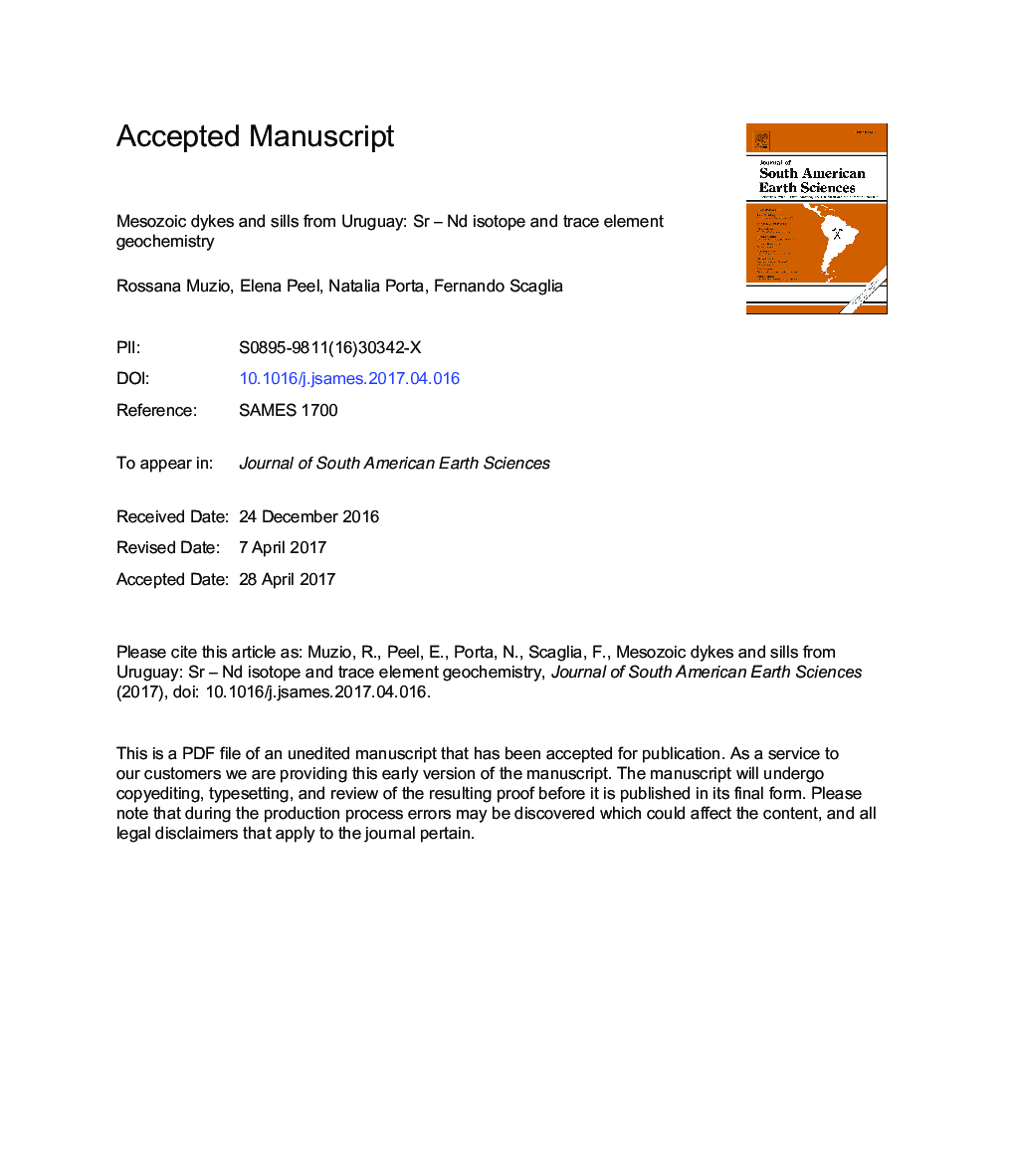| Article ID | Journal | Published Year | Pages | File Type |
|---|---|---|---|---|
| 5780366 | Journal of South American Earth Sciences | 2017 | 49 Pages |
Abstract
The Mesozoic mafic intrusions in Uruguay comprise dykes and sills grouped as the Cuaró Formation. They are mainly distributed along the southern portion of the Paraná basin, and they are considered part of the Paraná Magmatic Province. They crop out as typically grey moderately altered dykes and sills, characterized by glomero-porphyritic textures, with clusters of plagioclase and occasional clinopyroxene, set in a fine-grained groundmass composed by labradorite, augite and titaniferous magnetite. We present new lithogeochemical results particularly regarding Sr - Nd isotopes to discuss petrogenetic processes. All samples have high 87Sr/86Sr (0.71160-0.70781) and low 143Nd/144Nd ratios (0.512274-0.512585), with epsilon Nd(0) between â4.37 and â7.1. TDM model ages, calculated for 130 Ma, are composed of approximately 1.41-1.61 Ga, except for one dyke with 1.29 Ga. The isotopic data allow their classification as derived from the Gramado magma-type. Trace element geochemistry and isotopic data indicate that the primary magma would be a product of an enriched mantle source with a strong crustal signature, probably due to inherited subduction components and/or assimilation processes.
Related Topics
Physical Sciences and Engineering
Earth and Planetary Sciences
Earth and Planetary Sciences (General)
Authors
Rossana Muzio, Elena Peel, Natalia Porta, Fernando Scaglia,
